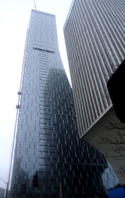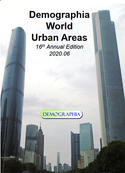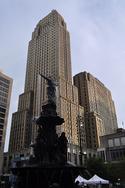The 2019 market share data has just been released by the American Community Survey. Looking at driving alone and transit market shares, there has been virtually no change since 2010, with driving alone accounting for about three-quarters of commuting, while transit remains steady at 5%. The big news before Covid: the increase in people usually working from home (also referred to as telework or telecommuting) read more »
City Sector Model
The Pre-Pandemic Rise of Working from Home (Telework) and Beyond
- Login to post comments
CSY Repost: The Community and Economic Development Hierarchy
I've spent many, many years of my career working to improve the economic development prospects of communities. Wanting to make a meaningful, positive contribution to the revitalization of cities is what pushed me into this career path. More to the point, I've spent a good deal of that time working in places that were facing stiff economic headwinds working against them. read more »
- Login to post comments
The Challenge of Revitalizing Urban Boulevards
One of the toughest challenges in real estate is revitalizing urban boulevards. There are dozens of plans for remaking these, but very few of these plans have actually sparked much private investment back of the curb line, and the reason is that in most cases these streets are simply so big and busy that people don't want to live or shop along them. It's time to use a new strategy, one of building at right angles to them, and of re-attaching underused land to the surrounding neighborhoods. read more »
- Login to post comments
Demographia World Urban Areas, 2020: Tokyo Lead Diminishing
For the first time in more than six decades the world’s second ranked built-up urban area has reached within 10% of leader Tokyo. The 2020 edition of Demographia World Urban Areas reports that Jakarta has reached a population of 34.5 million, behind Tokyo-Yokohama’s 38.0 million (Figure 1). The report can be downloaded here (Note 1). read more »
- Login to post comments
Employment by CIty Sector, Challenges Ahead for Downtowns
New Census Bureau employment data indicates that most job creation in the nation’s 53 major metropolitan areas (over 1,000,000 population) continues to be in the suburbs and exurbs. This article describes employment (job) locations by urban sector, using the City Sector Model (described in the Note Figure 4, below). The source of the data is “County Business Patterns, which is published annually for every zip code in the nation, which is unlike the American Community Survey, which uses a five-year period to cover all areas of the nation. read more »
- Login to post comments
Towards a Better Urbanism
The pandemic has brought panic to the once-confident ranks of urbanists promoting city density. read more »
- Login to post comments
Dispersion in US Metros Increases Even Before COVID-19: New Census Estimates
The latest US Census Bureau metropolitan area population estimates (for 2019) were largely lost in the coverage of the COVID-19 pandemic. read more »
- Login to post comments
The Coming Age of Dispersion
As of this writing, the long-term effects of the coronavirus pandemic remain uncertain. But one possible consequence is an acceleration of the end of the megacity era. In its place, we may now be witnessing the outlines of a new, and necessary, dispersion of population, not only in the wide open spaces of North America and Australia, but even in the megacities of the developing world. read more »
- Login to post comments
Transit Conundrum: Losses Greatest in Areas with Best Service in Los Angeles
In Los Angeles County, the nation’s most populous and core of the nation’s most densely populated urban area, transit commuting is dropping fastest in areas with the most comprehensive transit service. This is illustrated by an examination of the 5-year trend from 2008-2012 (middle year 2010) to 2013-2017 (middle year 2015) for Public Use Microdata Areas (PUMAs). read more »
- Login to post comments
A Walk Around Downtown Cincinnati
Recently I had to outrun a snowstorm, by driving to reach an appointment in Columbus (Ohio), out of fear that by morning the St. Louis airport might be closed (or the flight might be cancelled). This gave me the chance to stop by downtown Cincinnati, on the way home. read more »
- Login to post comments






















